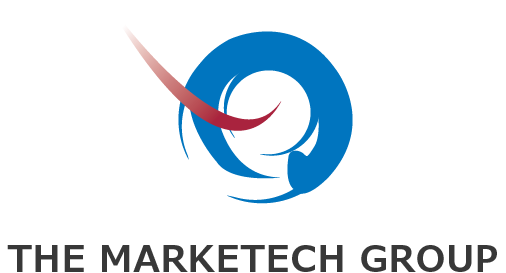Van Westendorp Analysis: Key to Understanding Customer Price Sensitivity
Share this article:
Written by: The Marketech Group

Pricing Model: Determining the Optimal Price Point
Establishing the right price for a product is a delicate balance… set it too high, and potential customers may walk away; set it too low, and you risk undervaluing your offering. In the competitive MedTech industry, where pricing influences both market adoption and long-term profitability, data-driven pricing strategies are essential.
One of the most effective methodologies for determining an optimal price range is the Van Westendorp Price Sensitivity Meter (PSM). This model helps businesses identify what customers perceive as acceptable pricing, providing critical insights into price thresholds, perceived value, and demand elasticity. When incorporating Van Westendorp analysis early in the product development process, companies can align pricing with customer expectations—mitigating risk and maximizing revenue potential.
What is the Van Westendorp Price Sensitivity Meter?
Developed in 1976 by Dutch economist Peter Van Westendorp, the Price Sensitivity Meter (PSM) is a research technique used to determine a product’s acceptable price range. It evaluates consumer perceptions by asking four key pricing questions, pinpointing the price thresholds where a product is seen as:
- Too expensive to justify purchasing
- Expensive but still acceptable
- A bargain or good value
- Too cheap to be considered credible
Unlike traditional willingness-to-pay surveys, which often rely on direct pricing inquiries, Van Westendorp’s approach captures the psychological factors influencing price perception—revealing an optimal "price corridor" that balances affordability with profitability.
Why Use the Van Westendorp Price Sensitivity Meter?
For MedTech companies, pricing decisions impact everything; from market penetration to regulatory reimbursement strategies. The Van Westendorp PSM provides a structured yet flexible method to:
- Validate pricing strategies before product launch
- Identify pricing sweet spots that maximize both demand and profit
- Minimize pricing risks by understanding what customers expect
- Support pricing adjustments for existing products in response to market shifts
Additionally, the Newton/Miller/Smith extension enhances Van Westendorp analysis by incorporating purchase likelihood at different price points.
By leveraging Van Westendorp analysis, The MarkeTech Group helps MedTech firms confidently set prices that reflect customer expectations and market realities.
Key Applications of Van Westendorp Analysis in Market Research
Pricing influences product success at every stage, from launch to market expansion. Van Westendorp analysis helps companies refine pricing strategies based on customer perceptions, making it a valuable tool for new product introductions, repositioning efforts, and pricing adjustments.
Bringing a New Product to Market
For a new product, pricing decisions can determine adoption rates and competitive positioning. Setting a price too low may create doubts about quality, while an overly high price can push potential buyers toward alternatives. Van Westendorp analysis helps establish a pricing range that aligns with customer expectations, balancing affordability and perceived value. This approach allows businesses to identify a price point that attracts interest while maintaining profitability.
Repositioning an Established Product
Market conditions, competitor strategies, and shifting customer needs can impact how an existing product is perceived. If a product is struggling to gain traction or losing market share, adjusting its pricing strategy can improve demand. Van Westendorp analysis helps identify where the product fits within current customer expectations, making it possible to refine pricing for better alignment with market conditions.
Adjusting Features and Pricing for Established Products
Products evolve based on feedback, technological advancements, and new use cases. When updates are introduced, pricing may need adjustments to reflect added value. Van Westendorp analysis provides insight into how much customers are willing to pay for enhanced features, helping companies determine whether a premium pricing model, tiered approach, or bundled offering is appropriate.
How Van Westendorp Analysis Works
Pricing isn’t just about numbers…it’s about perception. A product’s price influences how customers judge its quality, value, and affordability. Van Westendorp analysis helps businesses find the right balance by asking customers a set of structured questions designed to uncover pricing expectations. This method identifies a price corridor, the range where a product is considered neither too cheap nor too expensive.

The Four Key Van Westendorp Questions
At the heart of this analysis are four simple yet revealing questions. Rather than asking outright what someone is willing to pay, the method gauges perception, giving businesses a more nuanced understanding of how pricing impacts purchasing decisions.
At what price is the product too expensive?
This question identifies the threshold where customers believe the price is no longer reasonable. If too many respondents select a similar number, it may indicate resistance at that price point.
At what price is the product expensive but acceptable?
Not all high prices deter buyers. This question helps determine the upper limit where customers still see value, even if they perceive the product as costly.
At what price is the product cheap but acceptable?
On the lower end, this question identifies a price point that feels affordable while still maintaining credibility. Customers may see the product as a good deal at this price, increasing interest and potential demand.
At what price is the product too cheap to be credible?
If a price drops too low, it can raise doubts about quality. This question helps uncover the point where customers start questioning whether the product is reliable or effective.
Understanding the Acceptable Price Range
When the responses to these questions are plotted, the intersections reveal a range where most customers feel comfortable making a purchase. This "acceptable price range" helps companies position their product competitively while maximizing perceived value. Instead of guessing, businesses can rely on direct customer feedback to set a price that supports both sales and profitability.
How Van Westendorp Analysis Defines an Acceptable Price Range
To give you a practical look at how the Van Westendorp Analysis can be applied to establish an acceptable price range, check out this video.
The MarkeTech Group’s team explains how this methodology supports data-backed pricing research to pinpoint a pricing sweet spot that aligns with customer expectations and market dynamics.
Benefits of Van Westendorp Price Sensitivity Analysis
Pricing decisions carry risk. Set a price too high, and potential buyers may look elsewhere. Too low, and the product may lose credibility or leave revenue on the table. Van Westendorp analysis removes the guesswork by capturing real customer perceptions, providing a clear pricing range that aligns with expectations.
This approach is fast, efficient, and does not require a large sample to yield meaningful insights. It works well for early-stage pricing assessments, helping businesses refine strategy before launch. For existing products, it can reveal when adjustments are needed to maintain competitiveness.
With the integration of the Newton/Miller/Smith extension, which assesses purchase likelihood at different price points, businesses can move beyond perception analysis to estimate demand and revenue potential. The result? A pricing strategy that balances market acceptance with profitability.
How The MarkeTech Group Supports Optimal Pricing Decisions
Understanding customer price sensitivity is key to making informed pricing decisions. At The MarkeTech Group, we specialize in helping MedTech companies define optimal price points using Van Westendorp analysis and advanced pricing research methodologies.
Our team provides data-driven insights that go beyond simple price perception. We incorporate the Newton/Miller/Smith extension to assess purchase likelihood at different price points, allowing clients to estimate demand curves and revenue potential. Whether launching a new product, repositioning an existing one, or adjusting pricing strategies, our research ensures pricing aligns with market expectations while supporting profitability.
With decades of experience in medical imaging, diagnostics, informatics, AI, and life sciences, we deliver tailored pricing research that mitigates risk and enhances market adoption.
Ready to refine your pricing strategy? Submit an RFP today. Our experts are prepared to provide actionable insights that drive smarter pricing decisions.




